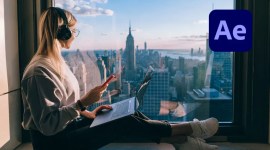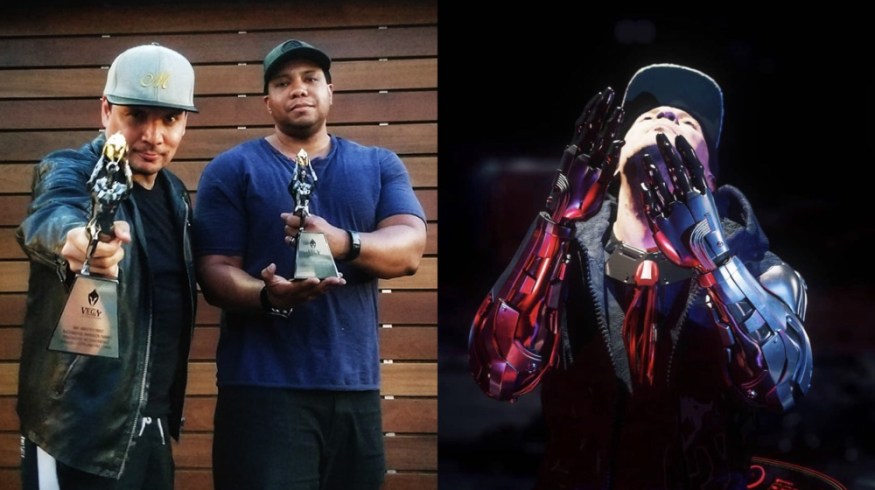
Behind-the-Scenes with Jonathan Winbush and His Latest NFT Project
PremiumBeat recently got a chance to talk with motion graphics artist Jonathan Winbush and go behind-the-scenes on his latest crypto art project, which is a music video collaboration with DJ Mix Master Mike. The project is titled Mob Recipe and involves everything from full-body 3D scanning and motion capture, to building a virtual set in Cinema 4D, and then minting everything as an NFT. To check out Mob Recipe in its entirety, visit Jonathan’s SuperRare page.
Jonathan Winbush: Yeah, so I’ve been doing crypto art for a few months now, just kind of getting my toes wet, and I’ve done a lot of projects with Mix Master Mike in the past. After talking to him about what I was doing in the NFT space, he was like, “We should actually put together an NFT crypto art album, with the audio and visuals together.” So, what I’m doing right now is I’m working on the first single with Mix Master Mike, we’re going to be putting it on SuperRare, and it’s going to be like a thirty to forty-five second music video with one of the clips off his new album that’s coming out.
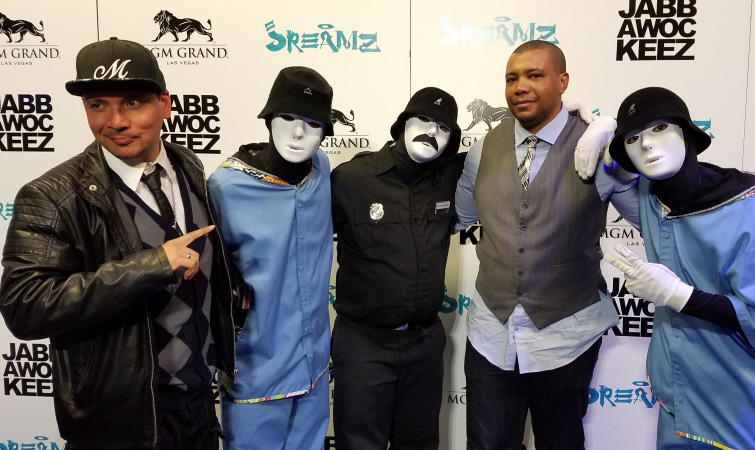
PB: I’m sure a lot of people are interested, as a motion graphics artist, how did you get connected with Mix Master Mike and start doing these collaborations?
JW: Funny enough, it started way back in about 2015-16, when I started getting into virtual reality. I was doing a lot of research and development, messing around with 360 VR stuff. We had a mutual friend at the time, Tony Washington, he was doing a lot of Mike’s illustration work because Mike was coming out with a comic book at the time. Tony actually introduced us. Mike has always been forward thinking and always likes to dabble in new technologies. And, he wanted to put out a music video, but nothing traditional. Tony told him what I was working on in 360 VR, so it kind of just mashed together. I sent him a pitch of some stuff that I was working on and the rest is history from there.

JW: Yeah, the image that you’re talking about is from this company called The Scan Truck. A couple of years ago, they came up with this concept. A lot of times when you want to 3D scan objects or people, you have to go to a soundstage that’s built for it. And, these guys actually built that soundstage inside of a mobile truck. They call it “The Scan Truck” because they can actually take it anywhere. They’re located here in Southern California, but they can drive it anywhere—if you’re shooting a movie or if you’re working on a video game.
Actors will come up to the truck, they’ll get a full 3D scan, so that everything is photo-real. They’re getting an exact 3D replica of whoever they’re scanning. Then, they take that 3D model and use it for VFX in movies or video games. In our case, we were helping them test it out and we were the very first ones to go in there and do some photogrammetry work. They gave us a 3D scan of Mike and myself, and that’s a lot of stuff that you see there.

PB: After the scan, how much cleanup of the 3D model was required?
JW: Each one of those cameras is taking a different angle of Mike and overlapping a little bit, so that you get as high-res of an image as possible. I don’t remember the specs right off the bat, but the model came back extremely heavy. So, you do have to decimate some of the polygons and smooth it down, just so it’s workable. I did that using Cinema 4D. And basically, I’m only using the head model from his scan, because I actually built out his body like a cybernetic character.
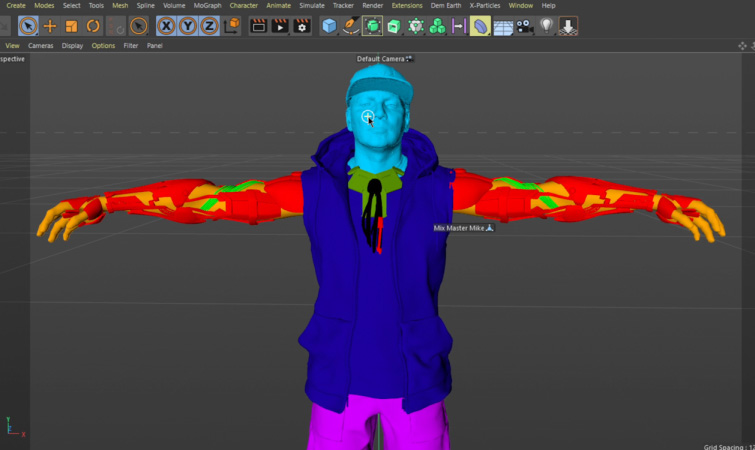
His arms are completely mechanical and they have wires hanging out of them. I was kind of pulling some inspiration from the bio-hacking people. They’ll actually take microchips and they’ll put them into their skin—they’re trying to turn themselves into cyborgs and making their body control different mechanical things, and stuff like that. So, I thought that was cool for some inspiration, the only part that’s actually human is his top, from the neck up. So, that’s the photogrammetry part that we’re using and the rest of his body is completely 3D modeled out.
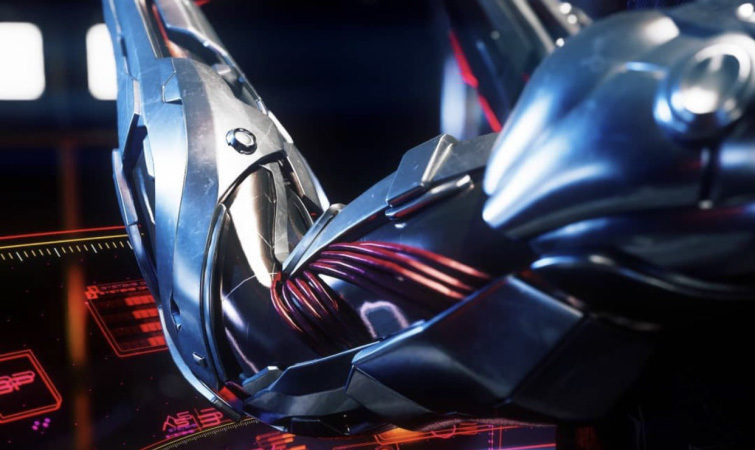
PB: And then, for the animation, I assume that’s where the motion capture suit comes into play?
JW: Yeah, for the motion capture, I’m actually using the Rokoko suit, which is an affordable motion capture solution for independent artists. I’m sure you’ve seen the behind-the-scenes of people with the spandex suits, and they have all those balls all over them, and they’re running around a soundstage. Now, in 2021, we can actually have those capabilities that we can just do in our house.
The Rokoko suit can actually work through Wi-Fi or Bluetooth, and it has all of the sensors inside a track suit. So, I was able to take my suit over to Mike’s studio and he put it on and he did a full performance. That way, I was actually able to capture all his essence, all his hand movements, and his body movements. And then, export everything into an FBX file, which I could actually bring over and attach to a model.

(If you would like to know more about the Rokoko motion capture suit Jonathan used, check out Todd’s post on How to Get Started with Motion Capture.)
PB: After you get the movements from the suit, how difficult is it to rig those onto the 3D model?
JW: I do a lot of tutorials on different techniques that I’ve come up with, like using motion capture with Adobe Mixamo and Cinema 4D Character Definition. So, I’m kind of already acclimated into what I was going to do. And, for this particular project, I took Mike’s motion capture data, did a little bit of cleanup in Rokoko Studio, and then just export out of FBX, which I’m using Mixamo to rig the 3D model.
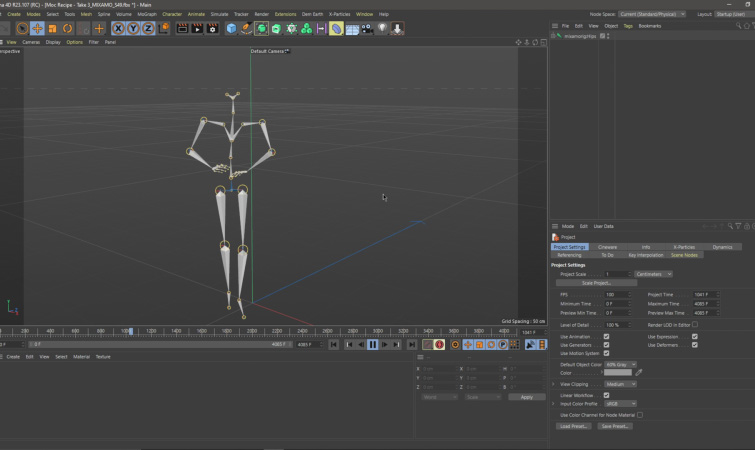
If you have a model and a T-pose, you can actually upload it to Adobe Mixamo. And then, I’ll do an auto rig in which it puts a skeleton on the model automatically. Then, you can bring that into Cinema 4D and just line up the joints and everything. I do have a tutorial on that actually. The process is like ten to fifteen minutes, and it’s not that difficult at all.
PB: What was the inspiration and process building the futuristic DJ set in Cinema 4D?
JW: For this particular project, I wanted the environment to also have a story to tell alongside Mike. So, I did some digging and I liked that Blade Runner type of environment—futuristic, but still familiar. So, the type of place that I put him into was maybe like a museum at one point, but it hasn’t been inhabited in for a hundred years. So, it’s a little bit decrepit. Maybe some people came in and they looted it, and then now it’s a lair for bio-hackers to go in and do their experiments.

It has a little bit of familiarity to it, but since it’s so far to the future and worn down, it’s kind of forgotten about. I thought that’d be a cool setting to put this bio-engineered Mike into. An area that no one knows quite where it is at. So, I rendered out eight different camera angles. Some of the angles look like surveillance cameras, like he’s almost being spied on inside his secret lair. I’m all about future tech, and Mike is too. That’s why I was like, “We should do something really cool, but not go full cyber-punk,” because that’s kind of played out.
(Want to know more about Cinema 4D? Check out PremiumBeat’s Tips for Learning Cinema 4D.)
PB: Can you explain more about what Unreal Engine is and how it works with Cinema 4D?
JW: For this particular project, I went through the mentality of how a game programmer or game developer would go about it. A lot of times, what they do is called “gray boxing.” They’ll build out their level in either Maya, or in my case, Cinema 4D. And, it’s all just geometry—no texturing or anything. You’re just kind of getting a layout for how you want your structures to be. I have this structure built inside of Cinema 4D, and from there, I export it out to Unreal Engine, because I have a lot of tools there, such as the Megascans library, which is a lot of different textures and photogrammetry geometry. And then, the Unreal Engine Marketplace has a lot of cool stuff, as well.
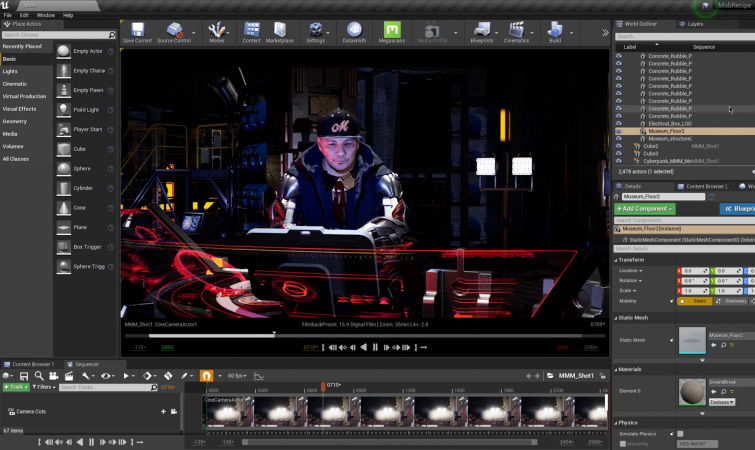
What I’d like to do is bring in raw geometry into Unreal Engine, and from there, I can do some really fine detail texturing. I do vertex blend painting where I can actually paint on the geometry. So, if I have a brick wall and I wanted to paint in some crumbling, I can just paint it in. I can also just drag-and-drop assets from Megascans into there. I’m doing this all in Unreal Engine because it is a game engine and they are built to run in real-time, so there’s no time needed for it to render anything. What you see is what you get. That’s the main reason I’m using Unreal Engine, because of how fast it is and the flexibility of it.
PB: What’s the process like when you’re launching an NFT like Mob Recipe on SuperRare?
JW: So, you have to make an .MPEG file, and that’s going to be a video format that you’re going to upload. Then, you have to put that onto the blockchain and that’s where SuperRare comes in. My particular wallet is called a MetaMask wallet, and that’s what handles all my Ethereum, and things of that nature. So, I’m using a MetaMask wallet to take this piece and tokenize it onto the blockchain. From there, it gets listed onto SuperRare, and that allows anybody that has Ethereum to make a bid on SuperRare. Then, if you have a bid you’re happy with, that’s when you accept it, and then that Ethereum goes back to your MetaMask wallet, and that’s your transaction.
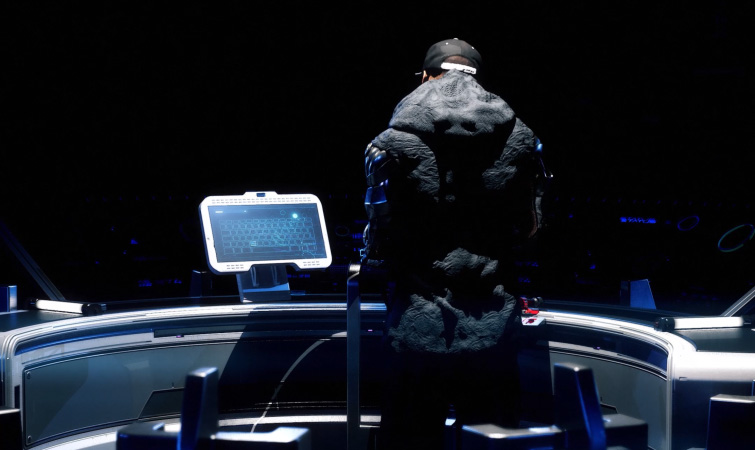
PB: You’ve mentioned a remix version, how does a remix work with a project like this?
JW: Yeah, so the performance is exactly the same, but I completely re-rendered everything. And, we’re calling it “the red pill and the blue pill,” because on the original one, the GUI and UI and everything had these red overtones, and the environment is kind of warm. So, for the remix, I re-rendered everything with like blue GUI and the lights are going to be a little bit cooler—it gives you a whole different vibe. Then, Mike went back and actually remixed the entire audio. So, the audio scratching and everything is the same, but he added 808 drums and the bassline is completely different, and the intro is different. So, it’s going to be almost like a completely different track.
Jonathan also sent over a few of PremiumBeat’s questions to DJ Mix Master Mike to hear about his experience creating Mob Recipe.
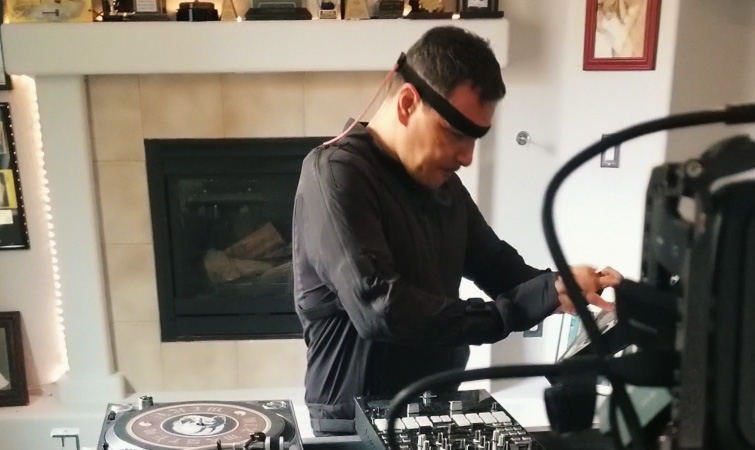
Mix Master Mike: What can I say? I mean, it’s like a match made in heaven for this platform. From the VR world into this world, we’ve always had the ability to unlock all of these endless possibilities for being a creative within this platform. With motion capture, anything goes—sky’s the limit. I can display my scratches. I could showcase the world what I am and what it’s like to be an action artist. That’s what I am, an action artist. Like I said, this is a match made in heaven.

PB: What’s the inspiration for combining music with new technology, like Virtual Reality and NFTs?
MMM: With this platform, the NFT world, the Virtual Reality world, it’s like the ultimate platform to actually get into the feel of what the music is about. The raw emotion, the performance of the song. And, that’s what’s missing when you’re listening to like stuff on Spotify, or just music in general. You use your imagination. With this thing, you don’t have to use your imagination. You can see it and you could hear it. You could feel it. You’re totally immersed within the song. That’s the beauty of these platforms.
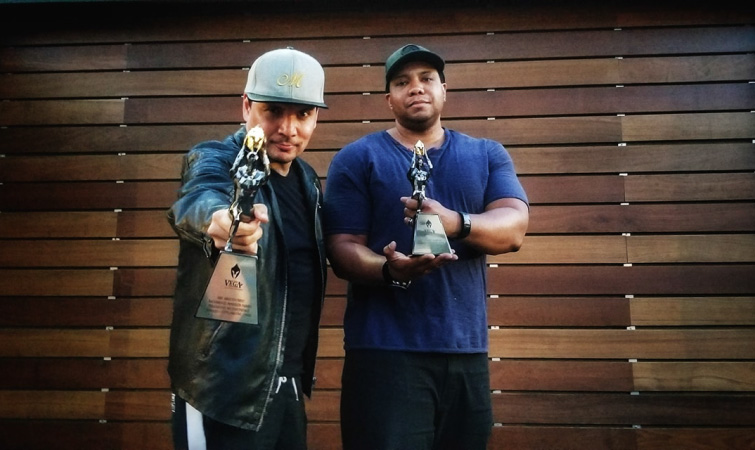
PB: What’s it been like collaborating with Jonathan on so many projects?
MMM: The beauty between me and Jonathan’s relationship is that we like the same things. We come from a hardcore hip-hop background. From the 80s to the 90s, to now. We have all that knowledge and all that wisdom. So, now, we use all that knowledge and wisdom and that experience and bring it into the new world and kind of turn the millennials on to it. Together, we’re turning the millennials on to all the stuff that we like. We’re recreating what’s in our heads. All of this stuff is created in our heads. We talk about it all the time. It’s just that now the world is finally getting to see it and experience it. Much love to Winbush.
If you’d like to learn more about Jonathan and Mix Master Mike’s projects, check out WINBUSH on YouTube and mixmastermike.com. Also, check out the 360 VR Tour of the set of Mob Recipe.
Interested in the royalty-free tracks we used to make this video? Give them another listen:
- “Hustlin’” by Harrison Amer
- “Late Night Latte” by Harrison Amer
- “Retro Chillhop” by Mattijs Muller
- “Constellation” by Chill Chord
- “Smooth Moves” by Reaktor Productions
- “A Sunlit Sunday” by Vincent Tone
For more music inspiration, check out these articles:
- Motion Graphics Artist Jonathan Winbush Talks Crypto Art
- Royalty Free Music and Other Tips to Protect Your Twitch Channel
- Explore the Adventurous Beats of Evan MacDonald’s Cinematic Music
- Get More for Less: Introducing Monthly Music Subscription
- What We Can Learn from Music Videos Released During Quarantine
Cover images courtesy of Jonathan Winbush and Mob Recipe Remix via YouTube.




